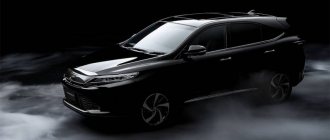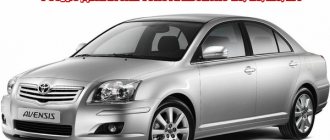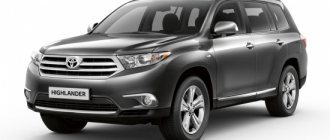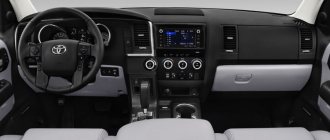The new Toyota C-HR is one of the brightest and most unusual new products of the outgoing summer. But is creativity alone enough to win the favor of the Russian public?
Vladimir Makkaveev
Toyota C-HR. On sale: from July 2018 Price: from RUR 1,299,000
Creativity and the desire to stand out from the crowd is one of the easiest ways to achieve success in almost any industry. However, in the automotive industry, introducing overly original solutions solely for their own sake is a risky business and not always justified. In recent years, the segment of ultra-light urban crossovers has proven to be the most original in terms of new non-trivial ideas. By and large, a new class was created practically from scratch, thanks to which automobile designers had the opportunity to experiment without much regard for models of previous generations.
Largely thanks to this, the automotive world saw the non-trivial “pop-eyed” compact crossovers Skoda Yeti and Nissan Juke. And if the Czechs eventually got rid of the too provocative features of the Yeti, retreating from originality towards updated corporate standards, then Nissan remained in this creative niche and did not lose. Yes, Juke, both before and after the update, evoked and evokes polar emotions in many people: some people categorically like it, others just as categorically reject it, but, oddly enough, this “bipolar creativity” ultimately brought success to the model, making it an absolute bestseller segment, primarily due to the sympathies of the fair half of humanity.
Such a brilliant breakthrough by Nissan Juke could not go unnoticed by its competitors. And this summer, another Japanese auto giant brought to Russia its version of the urban creative compact crossover - Toyota C-HR, the first concept of which was shown to the public almost four years ago at the Paris International Motor Show.
The idea of “hidden” handles on the back is not new, but it still looks interesting. A massive spoiler and chopped edges define the style of the rear of the C-HR.
Built on the same GA-C global modular architecture platform, revolutionary for the brand, as the new Toyota Camry, with its exterior, the C-HR urban crossover eliminates all questions about its purpose even at the first acquaintance. Of course, in its appearance you can find many features characteristic of Toyota platforms of the TNGA line: a low hood line, an artificially widened lower part of the body... But even more in common, if you look closely, you will find with the contours of the one whose market position the new one is intended to encroach upon. C-HR. The same short overhangs, “snub-nosed” bumpers, huge wheel arches in floating fenders disproportionate to the overall dimensions, a body line raised towards the stern, camouflaged handles and contours of the rear doors... Yes, there are, of course, differences: the C-HR is distinguished by chopped parts , a pronounced spoiler above the rear window instead of the modest wing of the Juke, angular futuristic optics instead of the soft and rounded lenses of the Nissan, more massive and functional plastic anti-gravel linings in the lower part of the body.
Like the Juke, the Toyota C-HR range is available in bespoke versions with bold color accents.
The C-HR is 30mm wider and 225mm longer than the Juke, resulting in soft and aerodynamically efficient lines with a high-angle windshield and rear window. In general, the appearance of the C-HR compared to the Juke seems no less original, brighter (not surprising, given the freshness of the model) and much more brutal, which should certainly appeal to the strong half of car enthusiasts. True, for all its brutal charisma, with a similar body height, Toyota’s ground clearance is 20 mm less than that of Nissan: 160 versus 180 mm. However, this is not the only oddity in the nature of the new product...
Front seats with good lateral support.
Due to the large dimensions of the body and a slightly different layout inside, the interior of the C-HR is more spacious than the Nissan one, and the finishing is more modern, not to mention the large multimedia screen on the center console with the ability to connect to Yandex navigation and a more strict pro-European dashboard display. The original corrugated door trims are also pleasing to the eye. In short, there’s practically nothing to complain about, at least until the time comes to slam the driver’s door and start driving.
It is noticeable that the on-board computer interface was inherited from the C-HR by its “big brothers”: the car system settings are present here only nominally in the form of an empty tab.
The textured diamond check door panels look very stylish.
The first thing that attracts attention is the unusually loud, almost metallic sound when closing the massive front doors, which is completely inconsistent with the appearance and status of the C-HR. Seals and locks do not perform their functions. What was once forgivable for Soviet “classics” is unacceptable for a futuristic crossover. This is even more surprising given the fact that the overall sound insulation of the interior of the C-HR is very high and cannot be compared with what the Juke has and especially had in its pre-restyling version. However, solving “door problems”, if you take care of them, will not be so difficult for Toyota, but with another design flaw of the C-HR - dead zones in the diagonal quarters of the rear hemisphere, the situation is much more difficult. It is clear that the appearance of a modern car, especially one as creative as the Toyota C-HR, is always to some extent a compromise between design and functionality, but here we are also talking about safety... Coupled with the glazing line that sharply creeps upward, huge trapezoidal the rear pillars leave the driver virtually no direct diagonal view, creating giant blind spots in the rear corners. Of course, there are optional electronic parking assistants, a blind spot monitoring system and mirrors, but at speed and in traffic, neither one nor the other is able to completely solve the problem of corner blind spots generated by the design, which is especially annoying given the potential youth and sometimes not very sophisticated in driving audience C-HR.
Diagonal visibility is very poor.
Unlike its main competitor, the suspension of the Toyota crossover (MacPherson struts in the front, multi-link in the rear) leaves only positive impressions from the first meters. In terms of suspension (and also thanks to a longer wheelbase - 90 mm), the C-HR is not only softer than its main competitor, but also more stable in corners.
Unlike Nissan, which relied on 1.6-liter naturally aspirated engines, Toyota offered a 1.2-liter turbocharged engine as the base power unit for the C-HR, removing almost the same amount of power from it: 115 hp. With. versus 117 for Juke. But this engine in a single-wheel drive version in Russia is only available with a manual gearbox. The cheapest version of the C-HR with a CVT is offered with a 2-liter naturally aspirated engine producing 148 hp. s., but also costs from 1,670,000 rubles. - even a little more than a 2‑liter Mazda CX-5 with automatic transmission. The 1.2-liter all-wheel drive (the AWD system is similar to the all-wheel drive of the Highlander and RAV4) C-HR version, the price of which already exceeds 2 million, will cost even more - over 2 million.
If in terms of power output there is no particular difference between the naturally aspirated Nissan and the Toyota turbo engine, then in its behavior on the road the C-HR once again demonstrated the inconsistency of its character. On the one hand, there is a moderately tight steering wheel, a comfortable suspension and decent stability and predictability in corners, on the other hand there is an absolute discreteness of the accelerator pedal with the complete absence of any feedback on it. When starting from a standstill, you simply press the feather-light gas pedal to the floor and wait a hopelessly long time for a response in the “on/off” mode. Of course, due to the specifics of the CVT settings, lags are also present in the Nissan Juke, but even with its naturally aspirated engine they are noticeably shorter than in the Toyota, and the pedal is not so discrete. And all this despite the fact that in terms of maximum torque the C-HR significantly exceeds its compatriot by 27 Nm (185 versus 158), not to mention the very stage of this top torque, which, thanks to Toyota’s turbocharging, extends from 1500 to 4000 rpm. and in Nissan the maximum torque is peak at the same 4000 rpm.
Despite the large base, the C-HR's trunk volume is only 297 liters - 57 liters less than the Juke.
Of course, it is possible that on single-wheel drive versions of the C-HR with a 2-liter naturally aspirated engine and other transmission settings, this problem is somewhat mitigated, but it is unlikely to disappear completely.
| UNISEX The creative and very unique exterior of the Nissan Juke leaves no one indifferent: it delights some, and causes equally outright rejection in others. But the Japanese approach paid off: Juke won many admirers, mostly, however, among the fair half of humanity. The same story in terms of perception most likely awaits the C-HR, but, unlike the Juke, its appearance is more consistent with the unisex style. |
Platform and body dimensions
Toyota New Global Architecture is a platform, the carrier of which is the Toyota C-HR. TNGA'x is made of high-strength steel. The car is equipped with independent suspension with transverse stabilizers. There is a “double-lever” installed at the rear and MacPherson strut at the front.
Toyota's dimensions are comparable to the description of subcompact crossovers:
- Length is 43.6 cm.
- Width – 17.95 cm.
- Height – 15.55.
- The distance between the wheels is 26.4 cm.
- Ground clearance – 16 cm.
The car body looks ergonomic, which gives the “Japanese” some impudence.
Design
Toyota Hr V for Russian users is assembled in Turkey. The exterior of the car is unique: a coupe with carefully hidden horizontal handles, which are located at the top of the rear doors. The glass curves gracefully and decreases in size, smoothly moving to the rear.
The gaze is focused on the “muscular” wheel arches. At the same time, you can clearly see how the lanterns and headlights are “stretched” onto the side parts. And the front optics seem to move away from the brand badge located in the center and stretch with a change in shape towards the front doors.
The boldness of the appearance is added by the size of the bumpers, on which air intakes and large stampings are located vertically. Small foglights are moved down onto a plastic panel.
Toyota C-HR is created in a muscular appearance, which is woven from contrasts: fancy bumpers, a daring “face”, puffy arches, complex optics, a faceted bumper. It’s difficult to call an SUV a beautiful car. But he is not short of originality.
Bottom line
Toyota C-HR keeps up with the times, it has a stylish and eye-catching design that perfectly emphasizes the character and individuality of its owner. Such a car will not get lost in a large parking lot of a shopping center and will not disappear into the gray everyday flow. The salon is a kingdom of high-quality finishing materials, well-adjusted ergonomics, practicality and comfort. Even a long trip will not cause unnecessary inconvenience to the driver or passengers. The manufacturer understands perfectly well that a car is not a toy and, first of all, it should provide driving pleasure. That is why, under the hood of the crossover there is a powerful and economical engine, which is the quintessence of innovative technologies, many years of experience in the field of engine building and legendary Japanese quality. Toyota C-HR will serve you for many kilometers and give you unforgettable emotions from the trip.
Interior
This car was created for “flying”; the interior is also packaged to meet these requirements. At the same time, the car turned out to be no less original inside than outside.
The covering depends on the configuration. Available in genuine leather or high quality leatherette. The material is durable and tactilely pleasant.
The front seats are heated and have a wide range of electrical adjustments. Therefore, there will be enough space for the “pilot” and his passenger, regardless of the size of those present. There is a compact sofa in the back, while there is little free space for passengers due to the wraparound roof. But there is enough space for three short people.
The doors of the Toyota S-NR are covered with plastic and carbon-like fabric. Leather armrests are installed.
The most attractive part of the interior decoration is the neon glowing line. It follows the contour of the multimedia display, dashboard and doors. Even the cup holders are not deprived of light.
The steering column is covered in leather. There are buttons and glossy inserts on it. Behind the steering wheel is the cruise control lever. The dashboard is simple. An on-board computer is installed in the center - an eight-inch touchscreen display with many options.
The luggage compartment has a small volume. The crossover has only 377 liters of free space. Manufacturers have made it possible to transform the trunk, but even with this, a significant increase in area cannot be achieved.
Engines
Toyota HR V borrows its hybrid engine from the Toyota Prius. The top trim will be equipped with a hybrid with a volume of 1.8 liters. The four cylinders of the engine are connected to two electric motors. As a result, the owner will receive a power of 122 hp. s., while fuel consumption will drop to 3.7 liters per 100 km.
For more economical consumers, there is the opportunity to purchase a car with a four-cylinder engine, the volume of which is 1.2 liters. With direct injection and a turbine, the power will reach 166 horsepower. For every 100 km you will have to spend significantly more fuel: at least 5.7 liters.
A two-liter turbocharged version will be available in several markets. In this case, the engine power will be 150 horsepower.
Engine and transmission Toyota C-HR
The Toyota C-HR is not only based on the fourth-generation Prius, but also inherits its hybrid setup. For lovers of classic solutions, conventional internal combustion engines are also available, equipped with a CVT or a six-speed manual gearbox.
- The base engine of the Toyota C-HR is a hybrid installation from the fourth generation Prius. Does it include two electric motors, a battery of nickel-hydride batteries? 1.8-liter in-line naturally aspirated petrol four-cylinder engine and CVT. In total, this power unit produces 122 horsepower and consumes only 3.7 liters of gasoline per hundred kilometers in the combined driving cycle.
- The Toyota C-HR also has a 1.2-liter inline-four turbocharged gasoline engine. It is capable of producing 116 horsepower at 5200 rpm and 185 Nm of torque in the range from 1500 to 4000 rpm. Such a power unit can be equipped with either a CVT or a six-speed manual gearbox.
- For lovers of more traditional solutions, the Toyota C-HR offers a regular two-liter in-line naturally aspirated petrol four. It produces 148 horsepower and 189 Nm of torque. These power units are installed exclusively on all-wheel drive versions with a CVT.
Safety
The Toyota c hr crossover is one of the safest cars in its class. A major role is played by the collision warning system, which activates emergency braking. According to the Euro NCAP crash test, the safety of the driver and adult passengers is 95%.
The child protection level is slightly lower. In a side collision, the small passenger is reliably protected, but in a frontal collision, he may suffer body injuries. Therefore, the safety of children is assessed at only 77%.
The pedestrian protection level is 76%. This is also possible thanks to the emergency braking system, equipped with an obstacle detection option. A pedestrian will receive injuries in the hip joint only in a collision with the central part of the hood. In this case, the bumper will not harm your legs.
Experts noted that the restyling does not have a driver warning about speeding. Therefore, the performance of security systems was assessed at only 78%.
Reviews
Andrey Goncharov, 34 years old:
I was pleasantly surprised by the absence of extraneous noise in the cabin. That is, sound insulation is at the highest level, like a good “Bavarian”. Only those sitting in the rear seats suffer from wheel noise. I didn't really like the front seats. An overweight person or driver wearing winter outerwear will not be entirely comfortable. The rear window is, of course, small. You have to focus only on the mirrors.
Ivan Mikhalovsky, 38 years old:
Toyota C-HR drives great. When driving, it doesn’t shake, you don’t fall into holes, you don’t bounce on ledges. Other Toyotas don't have this. The body is rigid, so you can get stuck in a snowdrift or hang on the curb in winter. And even on one that is below average. The ground clearance is quite low.
Nikita Manilov, 25 years old:
You can feel the Toyota quality. The machine is very compact and dynamic. This is exactly what I love, and I’ve always lacked this maneuverability. They were scared by the low ground clearance. He's really short, but that's not a problem for me. Although this is a crossover, it is still a city car. I really liked the multimedia with a large and sensitive monitor. Everything is convenient and clear. I fell in love with her just from one photo.
Specifications
The technical characteristics of the Toyota C HR deserve special attention. The car is equipped with two types of gasoline engines:
- 1.2-liter engine with 115 hp. With.;
- 2-liter naturally aspirated with 148 hp. With.
There are also 2 types of gearboxes:
- variable speed drive;
- mechanics with 6 gears.
Buyers have the opportunity to choose from three trim levels:
- Ride – manual transmission, front-wheel drive, volume – 1.2 liters.
- Hot - single-wheel drive and variator, volume - l.
- Cool - automatic transmission (automatic), all-wheel drive, volume - 1.2 liters.
The front suspension is spring, independent. Anti-roll bar installed. The rear suspension is also independent, there are telescopic shock absorbers, and anti-roll bars are installed.
Brakes:
- front – ventilated disc;
- rear - disc.
Safety Sense security package installed.
Exterior
The exterior design of the Toyota C-HR in the 2021 restyling has also become more modern, impressive and attractive. It’s interesting that the engineers did not use any major updates, since the car already had good external characteristics. The most noticeable changes here are:
- addition of three new colors to the palette of the automobile line: rich orange, blue, bright red. Moreover, the shade of the roof remains gray;
- fog lights are now located at the edges of the bumper;
- The shape of the bumper itself has also changed slightly for the better;
- updating of rear lights and head optics (all configurations - LEDs);
- The rear bumper has changed a little;
- New designs have been added to the wheel rims.
In general, the design of the Toyota C-HR can be called presentable and self-sufficient. The exterior image is holistic, the improvements have clearly been beneficial.
Dynamic characteristics
Driving the restalled Toyota model is comfortable and pleasant. This was made possible due to a special car starting system. The start of movement is carried out electrically, so the owner does not need to warm up the engine and listen to its frozen work. But after a few meters the gasoline engine turns on.
Dynamic characteristics depend on the configuration:
- Hot – with an 11-second acceleration to 100 km/h, the maximum speed is 195 km/h. Fuel consumption is 8.8 liters in the city, 5.8 on the highway, 6.9 with mixed driving. The fuel must be at least AI-91.
- Cool – acceleration occurs in 11.4 seconds. Maximum speed – 180 km/h. In city mode, the consumption of AI-95 is 8.1 liters, on the highway - 5.7, in mixed mode - 6.6.
- Ride – you can accelerate to 190 km/h: the needle will rise to the 100 km mark in 10.9 seconds. The consumption of AI-95 in the city will be 7.7 liters, on the highway - 5.4, in the combined cycle - 6.6.
Ecological class of the car is Euro 5.
C-HR trim options
The Toyota C-HR, the photo of which captivates the eye, is sold in several trim levels. There are three of them, each with its own advantages and disadvantages.
- Ride – basic build. The car has a 1.2-liter engine and a six-speed manual transmission. Wheels are stamped 17-inch. There is a stabilization system, ABS, front airbags. The mirrors are electrically adjustable and heated. There is a light sensor, halogen headlights, air conditioning, multifunction steering wheel, electric windows, an audio system with 4 speakers, a central armrest.
- Hot – the package is equipped with a two-liter power unit and a CVT. The basic version is additionally equipped with 17-inch alloy wheels. A rain sensor, fog lights, 2-zone climate control and cruise control are installed. The multifunction steering wheel is covered in leather and heated. The Toyota Touch 2 multimedia system with an eight-inch screen and a rear view camera is installed. A heating function is provided for the rest area of the wipers and front seats. The driver's seat is adjustable with lumbar support. There are curtain airbags and side airbags.
- Cool is a top-end assembly that comes with a 1.2-liter engine. It has a CVT and all-wheel drive. A full leather interior and an air ionizer in the cabin were added to the previous configuration. The car is equipped with LED optics and a control electronics mode selection system (Normal, Eco, Sport). There are LED optics, keyless access to the interior, and push-button start. The Cool package includes options such as electric folding mirrors, blind spot visibility, parking sensors, and assistance for unhindered reversing.
In addition, Toyota C-HR new has prepared additional option packages - Chrome and SUV pack.
Equipment
For Russian consumers, the Toyota C-HR is available with two types of power units. These are a 2.0-liter naturally aspirated and a 1.2-liter gasoline engine with a turbine. Each engine option is four-cylinder. They are paired with a continuously variable automatic transmission (CVT). There is a choice of drive, which comes either front-wheel drive or all-wheel drive. The crossover is available in two trim levels: “Hot” and “Cool”.
The first modification is a car with a two-liter naturally aspirated engine producing 148 horsepower. Paired with it is a variator capable of transmitting traction to the front wheels. The machine is equipped with the following options:
- 6 airbags;
- rain and light sensor;
- dual-zone climate control;
- parking sensors “in a circle”;
- LED lighting fixtures;
- 8-inch touch screen;
- camera in the rear of the car;
- Cruise control;
- fabric interior;
- heated steering wheel, front seats, windshield.
The “Cool” modification is considered top-end. The car in this configuration is equipped with all-wheel drive. Under the hood is a 1.2-liter turbocharged engine producing 116 horsepower paired with a continuously variable transmission. In addition to those electronic assistants that are included in the configuration below, an assistant when leaving a parking space, a leather interior, and a luxury media system with 9 JBL speakers have been added. The outside of the car is painted in two colors. You can enter the interior without a key thanks to the “comfort access” function. In addition, the crossover in this modification can monitor blind spots.
The price of the configurations is divided among themselves by an average of 400 thousand rubles.
Prices and sales in Russia
Toyota CHR is available not only for viewing in the photo. Since July 2018, the car can be purchased at Russian car dealerships. The model appeared on European markets 2 years earlier. At the same time, on domestic trading platforms the cost of C-HR ranges from 1,280,000 to 2,100,000 rubles. In Europe the price is 21,000 euros. The car in its class is not the cheapest. This is due to the saturation of auto electronics and the use of innovative developments in production.
Available options and colors
Looking at the photo of the Toyota C-HR, you understand that even the basic equipment of the Japanese is well “packed”.
It includes the following options:
- heated steering wheel and seats;
- side and front airbags;
- ABS;
- climate control;
- ESP;
- electric windows;
- factory standard audio system;
- multimedia system.
If these options are not enough for the user, then the basic package can be supplemented with:
- parking sensors;
- 576-watt audio system with 9 JBL speakers;
- leather interior;
- a system that allows you to identify markings and signs on the road;
- cruise control;
- Toyota Safety Sense safety system;
- by casting the required radius.
Available colors include:
- black;
- white;
- grey;
- red;
- mint;
- blue.
The SUV justifies the cost of each configuration. According to the manufacturer and TRD, the color scheme of the car can be changed - for a fee.
Pros and cons of a crossover
During operation, Toyota SHR owners managed to identify a number of advantages and disadvantages. One thing is said about the basic configuration: a front-wheel drive car can move on icy slopes, but it is impossible to operate it in off-road conditions. This is due to the weakly protected bottom, which can be easily damaged. The all-wheel drive model is designed for more severe driving conditions, so this characteristic does not apply to the top-end assembly.
The main disadvantages of the car were recognized by the owners as:
- Low dynamics. You can feel the weakness of the car during acceleration. But this will rehabilitate traffic on the highway.
- Small trunk. Despite the possibility of transformation, in addition to the necessary spare tire, jack and fire extinguisher, the rear compartment can only accommodate a few bags of groceries.
- Excessively light steering wheel. When driving over uneven surfaces, the steering wheel shakes and vibrates, feeling every hole.
- There is not enough space in the back, as in an inexpensive hatchback.
- Insufficient ground clearance. The ground clearance is sufficient for moving around the city, but beyond its limits there is a danger of “meeting”.
- The trunk is closed manually. The absence of an automatic system will be noticed by fragile girls. Reaching the raised lid and closing it is problematic.
- The visor above the windshield is small. Unable to protect from the sun, especially if it shines from the side.
- Lack of Apple car play.
- The rear view camera is not standalone, but is built into the mirror.
- Not the lowest fuel consumption.
Crossover advantages:
- Stability when driving on wet and icy roads.
- Safety of movement due to the size of the machine.
- High level of maneuverability.
- Good handling.
- Chassis balance.
- A rigid suspension that allows you to drive the crossover like a go-kart.
- Many intelligent systems. The driver can safely park, reverse, and climb steep slopes.
- High noise insulation. Silence in the cabin allows you to enjoy a comfortable ride without extraneous sounds.
- Efficient optics, just like in the picture.
- Comfortable driver and passenger seats.
- Dynamic cruise control.
- Availability of several security systems. The “pilot” has a rear view camera and a braking system when obstacles are detected.
- Reliability and safety inside the cabin.
Among the reviews from car owners, you can find many positive ones regarding the appearance of the car. Although some users call Toyota a “fat” SUV due to the presence of bold convex wheel arches and unique bumpers.
Toyota C-HR competitors
Officially, Toyota has only 2 competitors. The most promising is the Nissan Juke, followed by the Suzuki Vitara. To understand the difference, you need to compare the technical specifications, exterior and interior of the three cars.
Competitor overview:
Nissan Juke
It has a gasoline engine with a capacity of 117 “horses” and a volume of 1.6 liters. The cost of the basic configuration starts from 1.2 million rubles. The design of the car is bold, shocking, daring. For this, many compatriots managed to appreciate him. At one time, the Juke had as many buyers as the Toyota RAV4 and Renault Kaptur now have. But the pursuit of design led to the fact that the “filling” of the car left much to be desired. This also applies to technical characteristics.
Suzuki Vitara
Modification with 140 l. With. and a 1.4-turbo engine will cost 1.59 million rubles. The 117 hp petrol power unit is cheaper. s., volume 1.6 liters. The cost of the car will be 1.099 million rubles. Suzuki is also distinguished by his outrageousness. But the interior turned out to be not the main thing. The performance characteristics and quality of the interior did not allow the model to win the hearts of Russians. If the cost were an order of magnitude lower, there would be more chances for success.
Toyota C-HR
Equipped with gasoline and turbocharged engines. The cost varies from 1.1 million to 1.67 million rubles: not much more expensive than Suzuki and slightly cheaper than Nissan. However, Toyota has high technical characteristics, high-quality interior trim, and many options. Therefore, the new Japanese model continues to lead in sales in Europe and Russia.
The Hyundai Tucson crossover could also become a competitor to Toyota. But the external design of the car is somewhat different from the presented models.
Each crossover has its own advantages and disadvantages. At the same time, Toyota manufacturers tried to take into account all the nuances and create an almost universal car.
Photo
Looking at the photo of the Toyota CHR 2021, you can notice many external changes. Some lines have become smoother, while others have become sharper. But overall the design of the car looks original and modern. It really stands out from other cars. That’s why the Toyota CHR 2020 is quite popular among motorists.
A market presentation about the launch of car sales in Russia was held in November 2021. Soon, drivers will be able to purchase an updated version of the Japanese compact crossover to enjoy its external and technical characteristics. This machine is ideal for the climatic conditions of our region due to its characteristics. It allows you to develop high speed and feel great on both asphalt and dirt road surfaces. Hence, the 2020 Toyota C-HR is truly worthy of consumers' attention.
869











